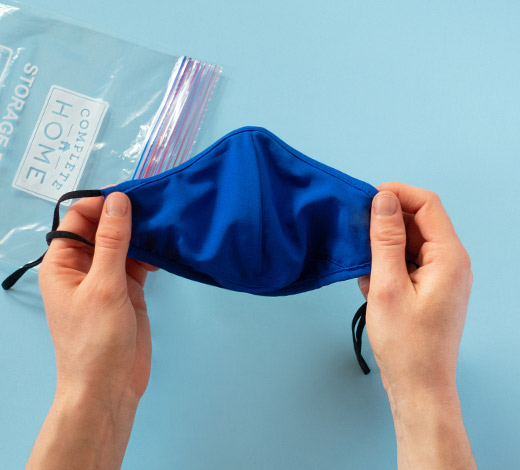
Marijuana has been used to relieve pain, digestive and psychological disorders for more than 3,000 years—but the efficacy, safety and legality of the drug are still widely debated.1
What is Medical Marijuana (Cannabis)?
Medical marijuana is the use of the leaves, flowers and buds of the hemp plant cannabis as treatment for diseases or symptoms. The healing properties of marijuana are due to its high cannabidiol (CBD) content (the non-psychoactive component of cannabis that may be beneficial in treating pain, epileptic seizures and possibly psychoses).2 Marijuana also contains tetrahydrocannabinol (THC), a molecule that can stimulate appetite, decrease nausea, reduce pain and produce a psychoactive effect.2
How Does Medical Marijuana Work?
Cannabinoids attach like a key to a lock to your body’s naturally occurring cannabinoid receptors, which make up the endocannabinoid (EC) system. Both the therapeutic and psychoactive properties of marijuana occur when a cannabinoid activates a cannabinoid receptor. Because the EC system is found in many parts of your brain and cannabinoid receptors are all over your body—in your brain, lungs, liver, kidneys and immune system—the effects of THC and CBD are wide-ranging.5
When marijuana is smoked, its effects can kick in immediately. The THC chemicals quickly travel from your lungs into your bloodstream. Then, brain cells release the chemical dopamine, which creates physical effects. When marijuana is eaten however, it may take up to an hour for it to metabolize in the stomach and digestive system before being felt by the brain.6
Research on the health benefits of marijuana is ongoing, but current studies have proven that cannabinoid receptors play an important role in many body processes, including metabolic regulation, cravings, pain, anxiety, bone growth and immune function.7
Why is the Use of Medical Marijuana Debated?
Though marijuana has been approved for medical use in many states, marijuana is not yet approved for national use by the Food and Drug Administration (FDA). Research has indicated it may impair your lungs, memory and judgment.8
However, research has also shown marijuana provides pain relief in ways traditional pain medicines don’t.9 Medical marijuana can improve appetite and relieve nausea in those who have cancer and it may help relieve symptoms such as muscle stiffness in people who have multiple sclerosis.10,11

What are Common Uses for Medical Marijuana?
Though there is limited research to create general treatment recommendations, medical marijuana use has been suggested and reported for many different conditions including:12
- Cancer pain management
- Parkinson’s disease
- Tourette’s Syndrome
- Alzheimer’s disease
- Schizophrenia
- Cardiovascular disorders
- Palliative care
- Glaucoma
How is Medical Marijuana Used?
Smoking medical marijuana is the most common method of using it because the patient is able to feel its effects almost immediately, and is able to control how much relief they need.13 However, this brings an increased risk of bronchitis or other respiratory problems.
Medicinal marijuana can also be:13
- Taken in capsules
- Vaporized (the plant is heated until active ingredients are released; no smoke is formed)
- Taken as a liquid extract
- Eaten (Pulverized into flour and baked or extracted into fat or oils)
What Are Potential Side Effects of Marijuana?
Side effects of marijuana are usually temporary and can include:14
- Dizziness
- Drowsiness
- Short-term memory loss
- Euphoria
Can You Get a Prescription for Medical Marijuana?
Medical marijuana can’t be purchased from a pharmacy like traditional prescriptions. It must be sold through a licensed dispensary in an approved state. Patients must be seen and evaluated by a licensed health care provider.15
If you’d like more information about the use of medical marijuana, talk with your doctor. Most states encourage patients to apply for a Medical Marijuana Identification Card (MMIC). Patients need to show proof of residence, have a qualifying condition and a medical recommendation for use from a licensed health care provider. This card allows patients to legally possess marijuana for medical use dispensed through a licensed dispensary. Please refer to your state specific laws for additional information on the use of medical marijuana.15
By Dahlia Sultan, PharmD
Resident Pharmacist, Walgreens and the University of Illinois at Chicago

Sources:
- http://www.cancer.gov/about-cancer/treatment/cam/hp/cannabis-pdq#section/_5
- http://www.pharmacytimes.com/publications/issue/2015/march2015/medical-marijuana-the-myths-and-realities/P-2
- http://www.ncbi.nlm.nih.gov/pmc/articles/PMC3165946/
- http://www.ncbi.nlm.nih.gov/pubmed/15678717
- http://headsup.scholastic.com/students/endocannabinoid
- http://www.webmd.com/mental-health/addiction/marijuana-use-and-its-effects
- http://www.ncbi.nlm.nih.gov/pubmed/16402900
- http://www.thelancet.com/journals/lancet/article/PIIS0140-6736(09)61037-0/abstract
- http://www.jpain.org/article/S1526-5900(16)00567-8/abstract
- http://www.ncbi.nlm.nih.gov/pubmed/23956774
- http://www.ncbi.nlm.nih.gov/pubmed/22791906
- http://www.ncbi.nlm.nih.gov/pmc/articles/PMC3202504/
- http://michiganmedicalmarijuana.org/page/articles/health/ingestion-methods
- http://drugabuse.com/library/the-effects-of-marijuana-use/#short-term-effects-of-marijuana
- http://www.ncsl.org/research/health/state-medical-marijuana-laws.aspx
Disclaimer: Walgreens is not a licensed medical marijuana provider.


